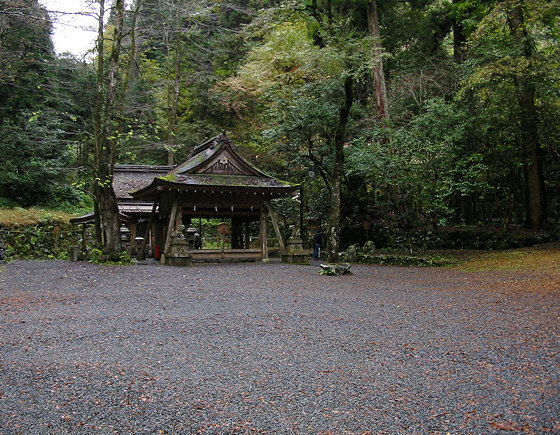The 22 Shrines of Heian-era Japan (Nijunisha)
There are thought to be around 100,000 Shinto shrines in Japan, but during the Heian Period (794-1185) there were 22 shrines, mostly in the Kyoto-Nara area, that received special offerings from the Imperial Court.
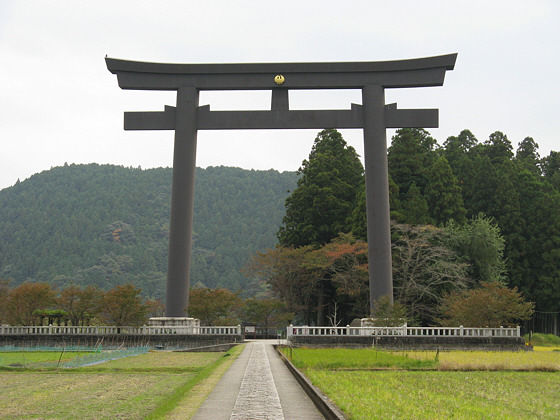
Largest shrine gate in Japan.
Ise Jingu Grand Shrine, Mie
The Grand Shrine at Ise is the centre of the imperial branch of Shinto, where the sun goddess Amaterasu is enshrined.
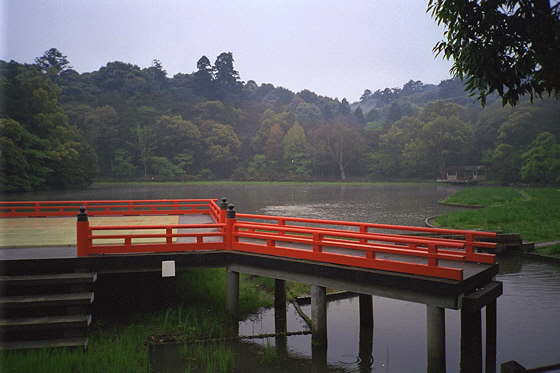
Ise Jingu outer shrine pond.
Iwashimizu Hachimangu Shrine, Kyoto
Iwashimizu Hachiman-gu was the tutelary shrine of the Minamoto (Genji) clan. Hachiman was the Shinto god of war and god of archery.
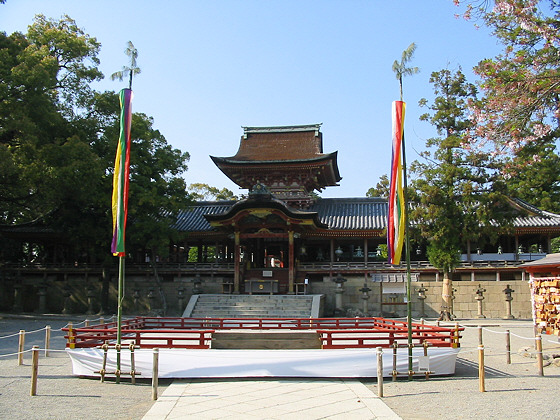
Iwashimizu Hachimangu Shrine.
Kamo Jinja Shrine, Kyoto
Kamo Shrine consists of the upper and lower shrines, Kamigamo and Shimogamo. Founded in 678, Kamigamo Jinja is one of Kyoto's oldest Shinto shrines, and often mentioned in ancient Japanese literature. After Kyoto became the capital in 794, the shrine was headed by an imperial priestess known as the Kamo Virgin. Shimogamo Jinja was founded in the 8th century and is known for its Harvest Moon Festival.
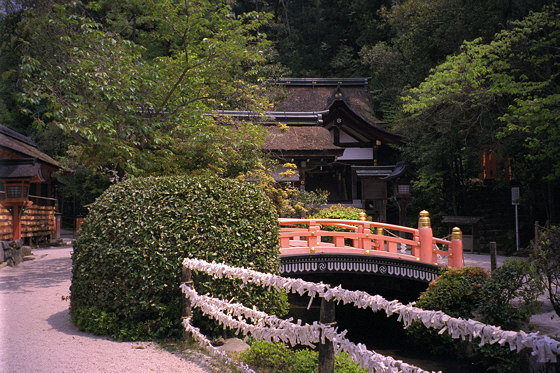
Kamigamo Jinja Shrine.
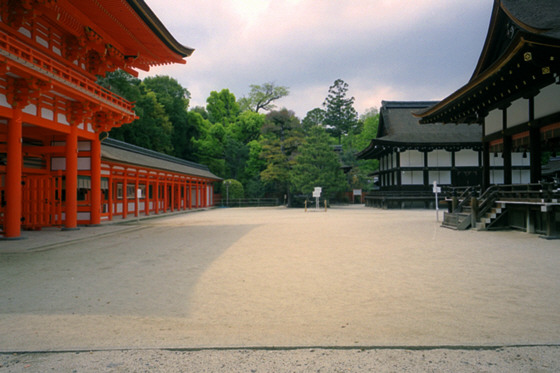
Shimogamo Jinja Shrine.
Matsunoo Taisha Shrine, Kyoto
Matsunoo Taisha dates back to the year 700 and is located in western Kyoto.
Hirano Jinja Shrine, Kyoto
Famous for its cherry blossom in Spring, Hirano Jinja was moved from the ancient province of Yamato to Kyoto in 794.
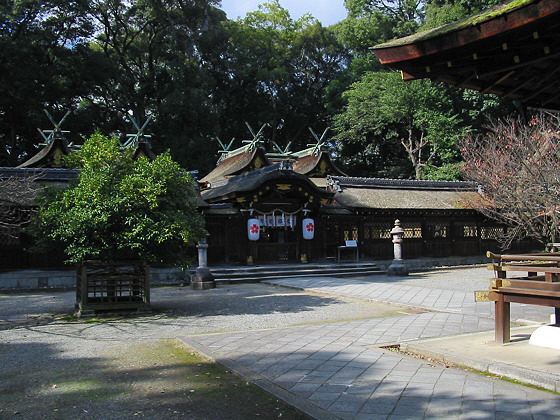
Hirano Jinja Shrine.
Fushimi Inari Taisha Shrine, Kyoto
One of the most photographed shrines in Japan, Fushimi Inari in southwestern Kyoto dates from 711 and is dedicated to Inari, the god of rice. Vermillion torii and statues of foxes holding a key are a feature of the shrine.
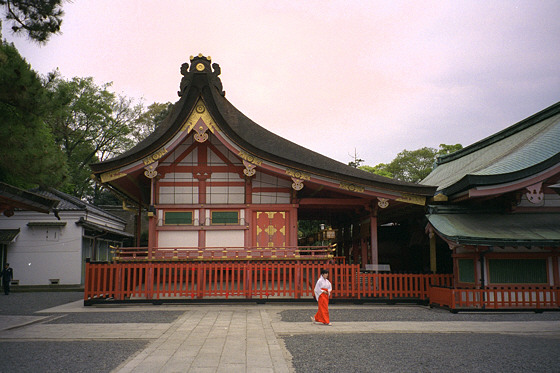
Fushimi Inari Taisha Shrine.
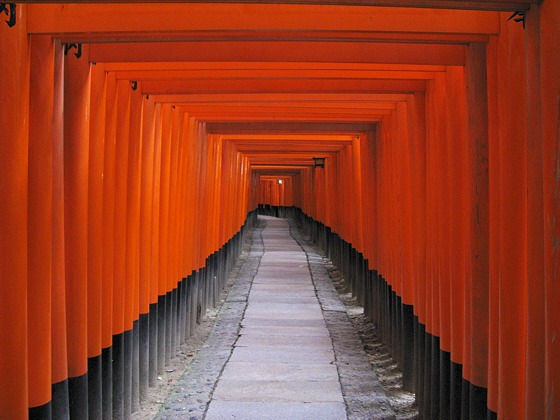
Fushimi Inari Taisha Shrine.
Kasuga Taisha Shrine, Nara
Kasuga Taisha Jinja in Nara was originally the tutelary shrine of the powerful Fujiwara clan in the Heian period.
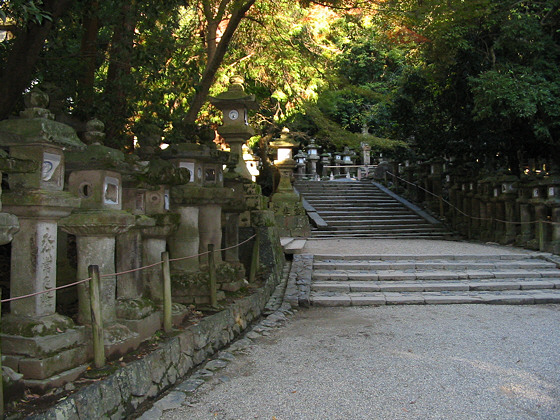
Kasuga Taisha Shrine.
Oharano Jinja Shrine, Kyoto
When the capital was moved from Nara to Nagaoka in 784, the Fujiwara clan invited their tutelary god to move to a new shrine at Oharano, west of present-day Kyoto City. According to legend, the god accepted and entered the new capital riding on the back of a deer.
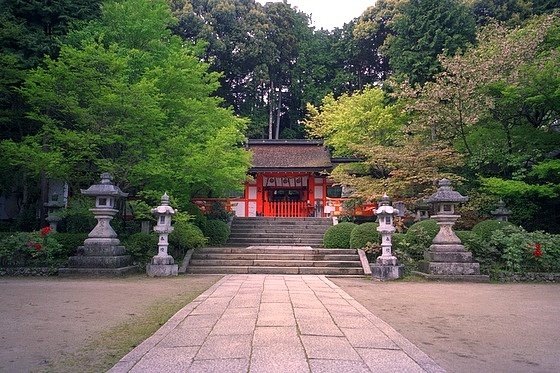
Oharano Jinja Shrine.
Omiwa Jinja Shrine, Nara
Omiwa Jinja is one of Japan's oldest shrines. The whole of Mount Miwa is considered to be part of the shrine.
Isonokami Jingu Shrine, Nara
This very ancient and sacred shrine is dedicated to Futsunomitama no Okami and holds a number of national treasures such as the seven-pronged sword, Nanasaya no Tachi.
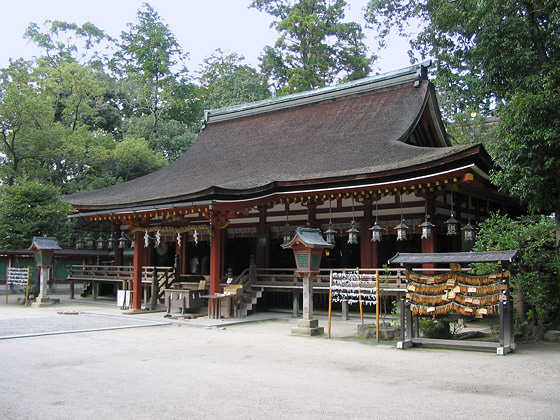
Isonokami Jingu Shrine.
Oyamato Jinja Shrine, Nara
Originally known as Yamato no Miya, Oyamato Jinja is located in on the Yamanobe no Michi path in Tenri, Nara. A war memorial for the crew of the battleship Yamato is located in the shrine grounds.
Hirose Taisha Shrine, Nara
Hirose Taisha is located in Kawai, Nara prefecture.
Tatsuta Taisha Shrine, Nara
Tatsuta Taisha is located in Sango, Nara.
Sumiyoshi Taisha Shrine, Osaka
Founded in 211 in what is now Osaka City, Sumiyoshi Taisha enshrines the Sumiyoshi Sanjin - Sokotsutsu no Onomikoto, Nakatsutsu no Onomikoto, and Uwatsutsu no Onomikoto - as well as Okinagatarashihime no Mikoto (Empress Jingu), and they are collectively known as the "Sumiyoshi O-kami," the great gods of Sumiyoshi.
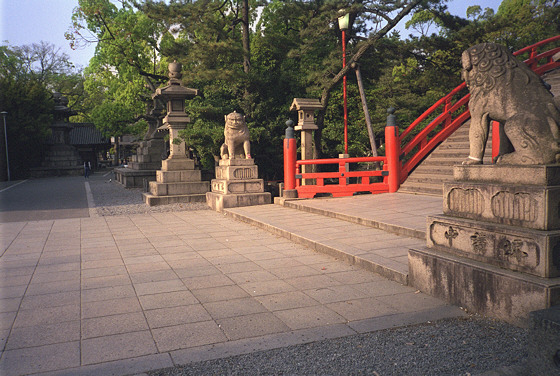
Sumiyoshi Taisha Shrine.
Hiyoshi Taisha Shrine, Shiga
Hiyoshi Taisha enshrines Sanno Gongen, the guardian deity of Mount Hiei. The shrine is situated at Sakamoto, beside Lake Biwa, north of Kyoto. During the late Heian period Hiyoshi Taisha had very close links with the powerful Enryakuji Temple on Mount Hiei. When monks came down from the mountain to demonstrate in the capital and make demands of the emperor they would first stop at the shrine and take a mikoshi (portable shrine) with them for protection.
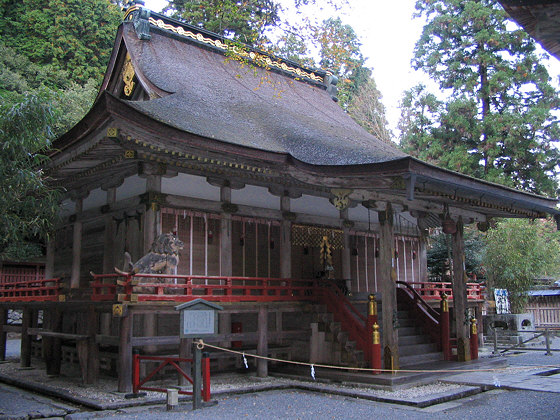
Hiyoshi Taisha Shrine.
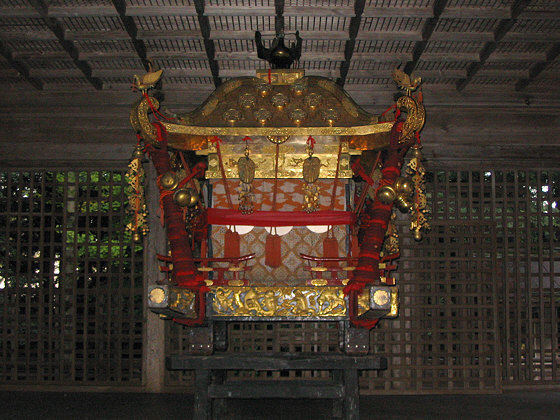
Hiyoshi Taisha Shrine mikoshi.
Umenomiya Taisha Shrine, Kyoto
Umenomiya Taisha was built around 1,300 years ago by Agata-no-inukai-no-michiyo to enshrine her family ancestors. The shrine was moved several times until it arrived at its present location in Kyoto in the early Heian period. Oyamazumi-no-kami, the god who first brewed sake, and his daughter Konohana-no-sakuyahime-no-mikoto are the deities enshrined.
Yoshida Jinja Shrine, Kyoto
Yoshida Jinja was founded in 859 by the Fujiwara clan.
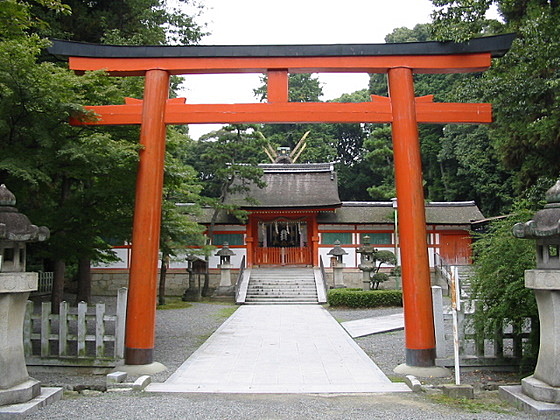
Yoshida Jinja Shrine.
Hirota Jinja Shrine, Hyogo
Hirota Jinja is one of three shrines which, according to the Nihon Shoki chronicle, were established by the Empress Jingu in the 3rd century.
Yasaka Jinja Shrine, Kyoto
Dating from 656, Yasaka Jinja, formerly known as Gion Shrine, is located in the Gion area of Kyoto City and is popular on New Year's Eve. The nearby Yasaka Pagoda is actually all that remains of Hokanji Temple.
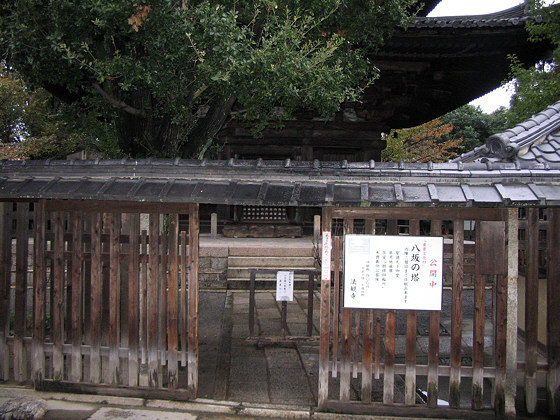
Yasaka Pagoda near Yasaka Jinja Shrine.
Kitano Tenmangu Shrine, Kyoto
The famous Kitano Tenmangu shrine in Kyoto is dedicated to Sugawara no Michizane (845-903), a court scholar and minister who was exiled to Kyushu.
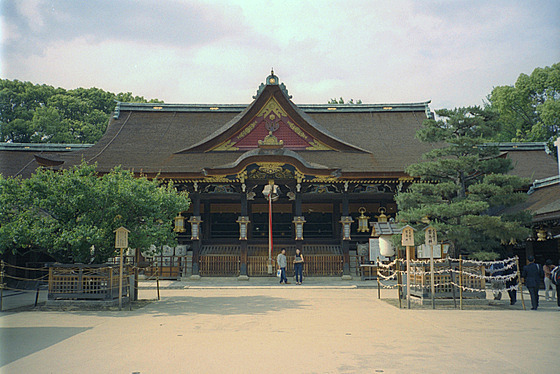
Kitano Tenmangu Shrine.
Niukawakami Jinja Shrine, Nara
Niukawakami Jinja is located in Nara.
Kibune Jinja Shrine, Kyoto
Kibune is a mountain just north of Kyoto. Towards the top of the mountain is the 1500-year-old Kibune Shrine (also known as Kifune Shrine), which was moved from its original site in 1045. A pilgrimage path leads from the shrine, over a hill, to Kurama Temple.
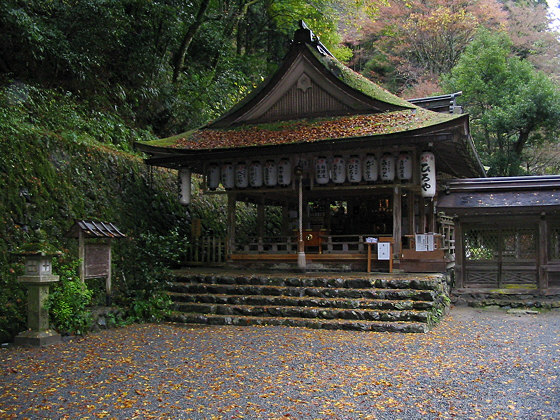
Kibune Jinja Shrine.
